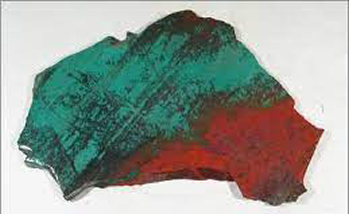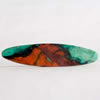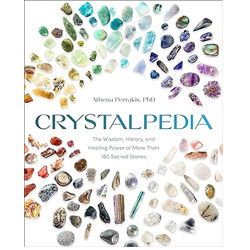- Jewelry
- Inspiration
- Our imagination
- Birthstones
- Celebrating with Eternal Flowers
- Druids and druidesses
- Flower meanings
- History, archeology jewelry
- History and healing properties of metals
- History and healing properties of stone
- Illumination jewelry
- Japanese symbols
- Maya calendar jewelry
- Stone color symbolism
- Stones catalogue
- Wedding anniversaries
- Searches a theme on the site
- Good Deals
- Paintings
- About
- Contact
JEWELRY
- Anklet
- Bracelets
- Brooches
- Cufflinks
- Earrings
- Pendants & Necklaces
- Rings
- Draw your jewelry
- GOOD DEALS
- How to clean your jewel
- Metal we used
INSPIRATION
- Our imagination
- Birthstones
- Celebrating with Eternal Flowers
- Druids and druidesses
- Flower meanings
- History, archeology jewelry
- History and healing properties of metals
- History and healing properties stones
- Illumination jewelry
- Japanese symbols
- Maya calendar jewelry
- Stone color symbolism
- Stones Catalogue
- Wedding anniversaries
- Searches a theme on the site
Sonora Sunrise: history, healing properties and lithotherapy

Sonora Sunrise properties

Sonora Sunrise, also known as Sonora Sunset, Sonora Sunrose, or chrysocolla cuprite, is a semi-precious stone with a fascinating origin. Its name, Sonora, pays tribute to the Mexican state where it is mined, a region rich in history and traditions.
With its striking shades of red, orange, and blue, this stone evokes the colors of a sunrise or sunset, hence its evocative names. Its hues mirror desert landscapes bathed in the first light of dawn or the glow of twilight, when the sun's intense tones blend with the deep blue sky and the lush green of cacti.
Sonora Sunrise is a composite rock, primarily composed of cuprite (deep red), chrysocolla (blue-green), and tenorite (black). It may also contain variable traces of chalcotrichite (orange-red) and occasionally malachite (green). The combination of these minerals gives each specimen a unique appearance and vibrant color palette.
This stone forms in oxidized copper deposits, where the interaction between copper, oxygen, and other elements within the host rock creates its distinctive hues. It is mainly found in the supergene zones of copper mines, where mineral oxidation and chemical alterations generate its intense coloration.
Sonora Sunrise has a variable hardness on the Mohs scale, generally between 3 and 4, due to the softness of chrysocolla and cuprite. This fragility requires careful polishing to enhance its colors without compromising its structure.
Its primary source is the Milpillas Mine, located in the Sonora State of Mexico. The mine was opened in 2006, and high-quality specimens are rare and highly sought after by collectors and lapidary artists, who transform them into cabochons or unique jewelry pieces.
History, legends and beliefs about the Sonora Sunrise
Although relatively new to the gemstone market, Sonora Sunrise already boasts an intriguing history. Discovered in 2006 in the Milpillas Mine, located in the Sonora State of Mexico, this unique stone quickly gained recognition. The mine, renowned for producing some of the finest chrysocolla and azurite specimens, soon revealed the existence of this striking mineral, characterized by the combination of cuprite, chrysocolla, and tenorite.
Upon its introduction to the market, Sonora Sunrise immediately captured the interest of collectors and lapidary artists, drawn to its spectacular colors reminiscent of a desert sky at sunrise or sunset. The blend of intense red, deep blue, and mysterious black gives it a rare, almost painterly appearance among minerals.
Since 2011, the Milpillas Mine has significantly reduced its extraction of Sonora Sunrise, making high-quality specimens increasingly rare and highly sought after. Pieces displaying a harmonious balance between the red of cuprite and the blue of chrysocolla are particularly prized, especially for jewelry and artistic creations.
While Sonora Sunrise is not linked to ancient traditions due to its recent discovery, some already view it as a stone of transformation and vitality, inspired by its mineralogical composition and the strength of its natural hues. In modern beliefs, it is sometimes associated with the energy of the setting sun, symbolizing the end of a cycle and the promise of renewal.
Healing properties and benefits of the Sonora Sunrise
Throughout human history, man has attributed various healing properties, virtues, and beliefs to sonora sunrise. The information presented here is shared for cultural and historical purposes, to illustrate the symbolic relationship between this stone and man throughout time and civilizations. It does not constitute a therapeutic or medical recommendation.
- Thanks to the chrysocolla, Sonora Sunrise promotes open and sincere communication, helping one express emotions with clarity. It is ideal for those seeking to overcome shyness, develop creativity, or improve interpersonal relationships. Its gentle energy soothes stress and anxiety, fostering a sense of inner peace.
- The combination of copper in cuprite and chrysocolla makes Sonora Sunrise a powerful stone for enhancing energy flow within the body. It is believed to support the balance of the nervous and endocrine systems, helping to harmonize emotions and increase resilience in the face of challenges.
- Traditionally, cuprite is known for its beneficial effects on the lungs and throat. Sonora Sunrise could be particularly useful for those suffering from respiratory issues or needing to strengthen their immune system. Additionally, it is believed to stimulate blood circulation and improve oxygenation at the cellular level.
 Please note that all healing properties attributed to stones come from ancient traditions and various cultural sources. This information is provided for informational purposes only and does not constitute medical advice. In case of any health concerns, it is recommended to consult a qualified professional.
Please note that all healing properties attributed to stones come from ancient traditions and various cultural sources. This information is provided for informational purposes only and does not constitute medical advice. In case of any health concerns, it is recommended to consult a qualified professional.
Sonora sunrise jewelry samples
To learn more about litotherapy, we recommend you the following books:





